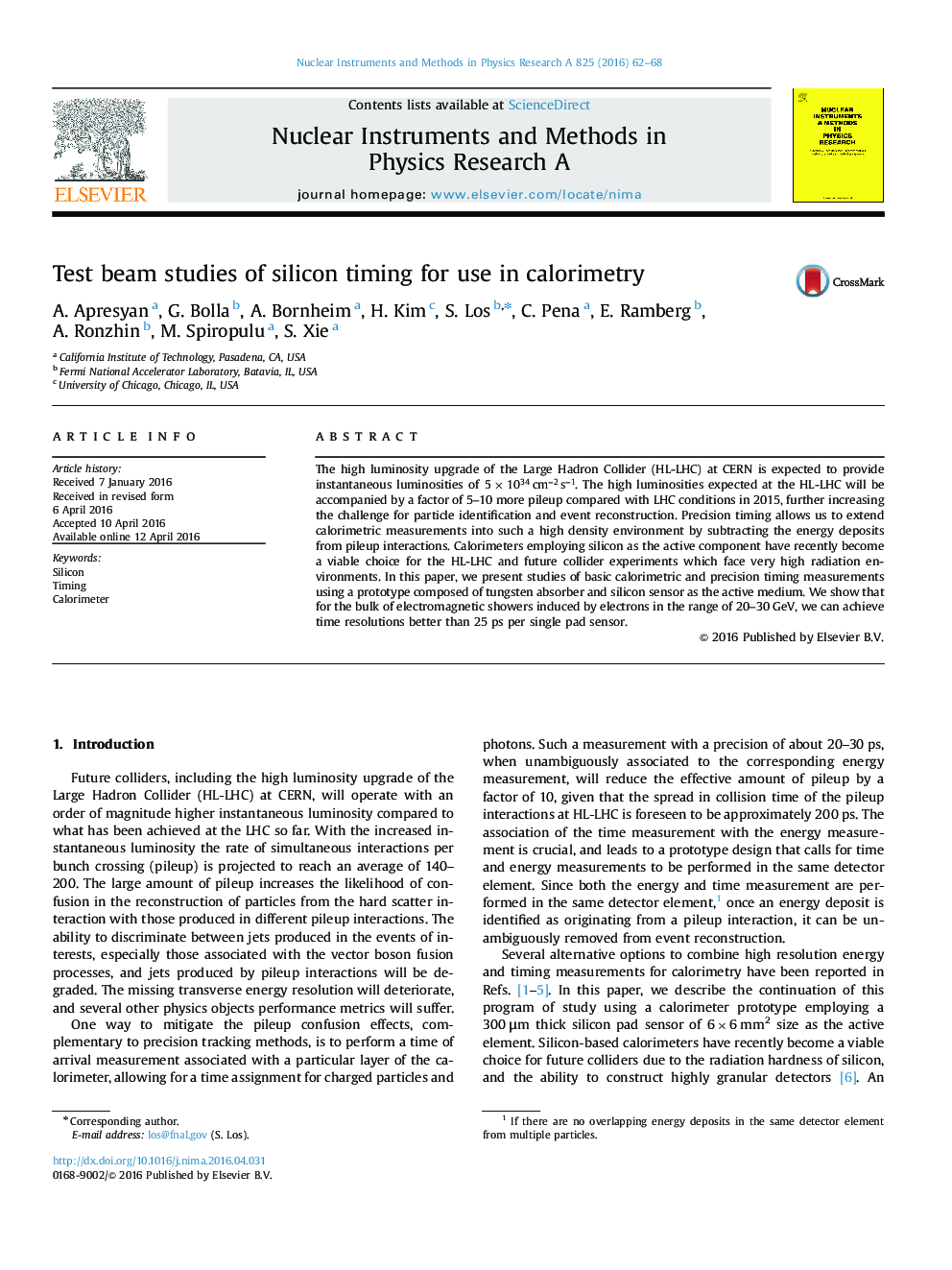| Article ID | Journal | Published Year | Pages | File Type |
|---|---|---|---|---|
| 1822076 | Nuclear Instruments and Methods in Physics Research Section A: Accelerators, Spectrometers, Detectors and Associated Equipment | 2016 | 7 Pages |
Abstract
The high luminosity upgrade of the Large Hadron Collider (HL-LHC) at CERN is expected to provide instantaneous luminosities of 5Ã1034cmâ2sâ1. The high luminosities expected at the HL-LHC will be accompanied by a factor of 5-10 more pileup compared with LHC conditions in 2015, further increasing the challenge for particle identification and event reconstruction. Precision timing allows us to extend calorimetric measurements into such a high density environment by subtracting the energy deposits from pileup interactions. Calorimeters employing silicon as the active component have recently become a viable choice for the HL-LHC and future collider experiments which face very high radiation environments. In this paper, we present studies of basic calorimetric and precision timing measurements using a prototype composed of tungsten absorber and silicon sensor as the active medium. We show that for the bulk of electromagnetic showers induced by electrons in the range of 20-30Â GeV, we can achieve time resolutions better than 25Â ps per single pad sensor.
Keywords
Related Topics
Physical Sciences and Engineering
Physics and Astronomy
Instrumentation
Authors
A. Apresyan, G. Bolla, A. Bornheim, H. Kim, S. Los, C. Pena, E. Ramberg, A. Ronzhin, M. Spiropulu, S. Xie,
